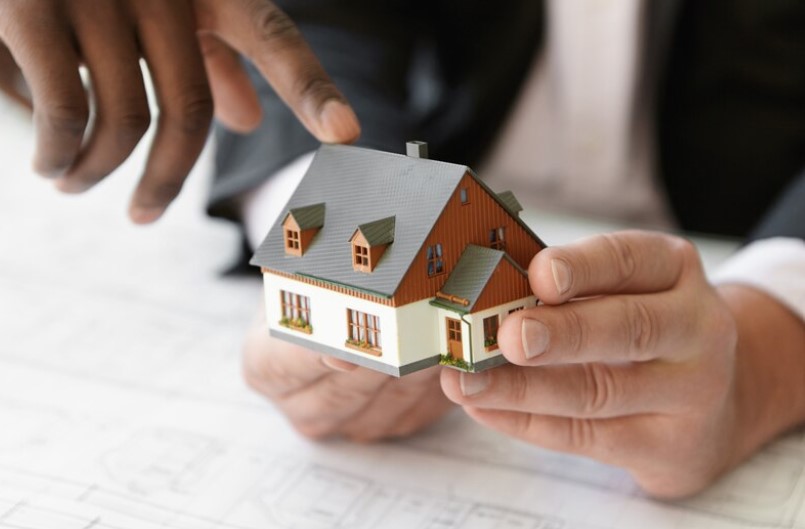A knockdown rebuild, also known as a teardown and rebuild, offers a unique opportunity to create your dream home from the ground up. By demolishing an existing structure and constructing a new one in its place, you can customize every aspect of your living space to meet your specific needs and preferences.
Understanding the Knockdown Rebuild Process
A typical knockdown rebuild involves several key stages:
Planning and Preparation
Before embarking on a knockdown rebuild, it’s essential to conduct a thorough assessment of the property’s suitability. Evaluate factors such as soil conditions, zoning restrictions, and infrastructure availability to determine if the project is feasible. Once feasibility is established, obtain the necessary permits from local authorities, including building permits, demolition permits, and zoning variances.
Collaborate with an architect or designer to develop detailed plans for the new structure, considering factors such as layout, style, and functionality. Create a comprehensive budget that accounts for demolition costs, construction materials, labor, permits, and potential contingencies. Additionally, conduct a thorough evaluation of the existing site, identifying any structural issues, environmental concerns, or utility lines that may need to be relocated.
Demolition
Demolition is a critical stage in the knockdown rebuild process. Implement strict safety measures to protect workers and the surrounding community throughout the demolition process. Select appropriate demolition equipment, such as excavators, wrecking balls, or hydraulic breakers, based on the size and complexity of the structure. Minimize environmental impact by properly disposing of construction waste and managing hazardous materials. Ensure that all utilities, including water, electricity, and gas, are disconnected before demolition begins.
Site Preparation
Once the demolition is complete, the site must be prepared for construction. Clear the site of debris, vegetation, and other obstacles, and prepare the ground for excavation. Dig trenches for foundations, utilities, and other structural elements. Install or relocate utility lines, such as water, sewer, gas, and electrical lines, as needed. Conduct soil tests to assess its suitability for construction and identify any potential issues, such as poor drainage or contamination.
Construction
The construction phase involves building the new structure from the ground up. Begin by constructing a solid foundation to support the weight of the home, considering factors such as soil conditions and building codes. Erect the structural framework, including walls, floors, and roof. Install plumbing and electrical systems, ensuring compliance with building codes and safety standards. Roof the home, choosing a suitable material based on local climate, aesthetics, and budget. Apply exterior finishes such as siding, trim, and windows. Finally, complete the interior of the home, including drywall, painting, flooring, and cabinetry.
Landscaping
After the construction is complete, focus on landscaping the surrounding area. Create a landscaping plan that complements the style and architecture of the new home. Select plants that are suitable for your local climate and soil conditions, considering factors such as sunlight, water requirements, and maintenance. Install hardscape elements such as patios, walkways, and retaining walls. Finally, install an irrigation system to ensure adequate watering for plants and lawns.
By carefully planning and executing each stage of the knockdown rebuild process, you can create a beautiful and functional new home that meets your specific needs and preferences.
Key Considerations for a Knockdown Rebuild
When planning a knockdown rebuild, it’s essential to consider several factors:
- Budget: Determine your overall budget for the project, including demolition costs, construction materials, labor, and permits.
- Zoning Regulations: Ensure that your plans comply with local zoning laws and building codes.
- Design and Style: Choose a design that reflects your personal style and meets your functional requirements.
- Sustainability: Consider incorporating sustainable features such as energy-efficient appliances, solar panels, or rainwater harvesting systems.
- Timeframe: Estimate the duration of the project, taking into account factors like weather conditions, material availability, and the complexity of the design.
- Community Engagement: Consult with neighbors and community groups to address potential concerns and gain support for the project.
- Historical Preservation: If the existing structure has historical significance, explore options for preserving or incorporating elements into the new design.
- Accessibility: Ensure that the new home is accessible to individuals with disabilities, complying with relevant building codes and regulations.
- Sustainability: Consider incorporating sustainable features such as energy-efficient appliances, solar panels, or rainwater harvesting systems to reduce your environmental impact.
- Future-Proofing: Design the home with flexibility in mind, allowing for potential modifications or additions in the future.
Benefits of a Knockdown Rebuild
A knockdown rebuild offers several advantages:
- Customization: You have complete control over the design and layout of your new home, tailoring it to your specific needs and preferences.
- Increased Value: A well-executed knockdown rebuild can significantly increase the value of your property.
- Improved Energy Efficiency: Modern construction techniques and materials can result in a more energy-efficient home, reducing your utility bills.
- Enhanced Curb Appeal: A new home can enhance the overall aesthetic appeal of your neighborhood.
- Personal Satisfaction: Creating a custom-built home can provide a sense of accomplishment and satisfaction.
Potential Challenges
While a knockdown rebuild offers numerous benefits, it’s important to be aware of potential challenges:
- Cost: Knockdown rebuilds can be more expensive than renovations, especially if you opt for high-end materials and finishes.
- Disruption: The construction process can be disruptive, requiring you to relocate temporarily and potentially deal with noise and dust.
- Unexpected Costs: Hidden costs may arise during the project, such as unforeseen structural issues or changes in building codes.
- Timeline: Construction timelines can vary, and delays may occur due to weather conditions, material shortages, or unforeseen challenges.
Tips for a Successful Knockdown Rebuild
To ensure a smooth and successful knockdown rebuild, consider the following tips:
- Hire a Reputable Contractor: Choose a qualified and experienced contractor who specializes in knockdown rebuilds.
- Create a Detailed Plan: Develop a comprehensive plan outlining the scope of the project, timeline, and budget.
- Communicate Effectively: Maintain open and regular communication with your contractor and project team.
- Consider Insurance: Protect your investment with appropriate insurance coverage.
- Be Patient: The process can be time-consuming, so be prepared for potential delays and setbacks.
A knockdown rebuild offers a unique opportunity to create a home that perfectly reflects your vision and lifestyle. By careful planning, budgeting, and collaboration with experienced professionals, you can transform your property into a beautiful and functional living space.





